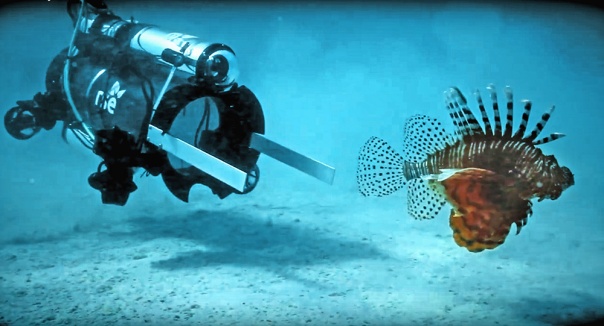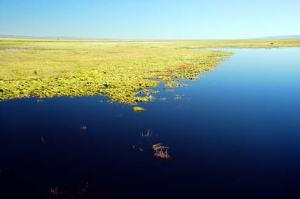Blog Archives
Innovative Weaponry in the Fight Against AIS
In the fight against alien animals that invade and overrun native species, the weird and the wired sometime win.
Invasive species are plants and animals that thrive in areas where they don’t naturally live, usually brought there by humans, either accidentally or intentionally. Sometimes, with no natural predators, they multiply and take over, crowding out and at times killing native species.

A new underwater robot is targeting the stunning but dangerous lionfish. The robot, called Guardian LF1, uses a gentle shock to immobilize the lionfish before they are sucked alive into a tube. In its first public outing this month, the robot caught 15 lionfish during two days of testing in Bermuda. Top chefs competed in a cook-off of the captured lionfish which sells for nearly $10 a pound.

U.S. Fish and Wildlife officials are using souped-up old technology to catch Asian carp, a fish that’s taken over rivers and lakes in the Midwest. They use a specialized boat – the Magna Carpa – with giant winglike nets that essentially uses electric current as an underwater taser to stun the fish, said biologist Emily Pherigo. At higher doses, the fish are killed and float to the surface. In just five minutes, they can collect 500 fish, and later turn them into fertilizer.
Read More
Oregon Food Processor Wants To Turn Invasive Carp into Organic Fertilizer
Introduced to Malheur Lake as early as the 1920s, likely as a food source for people living in the arid region, the invasive carp have now taken over the lake.
 Historically, Malheur Lake was utilized by up to 35% of the Pacific Flyway’s canvasback population, was the second most important redhead production site in the West, and at its peak produced, over 100,000 ducklings annually. Currently the refuge has only 5-10 percent of the productive bird habitat it provided before carp were introduced.
Historically, Malheur Lake was utilized by up to 35% of the Pacific Flyway’s canvasback population, was the second most important redhead production site in the West, and at its peak produced, over 100,000 ducklings annually. Currently the refuge has only 5-10 percent of the productive bird habitat it provided before carp were introduced.
The estimated carp population in the refuge has grown into the millions. The carp sift through the mud searching for insects and aquatic plants to eat; uprooting plants and creating silt plumes in the process. Malheur Lake is void of the plants that provide food, shelter, and nesting grounds for waterfowl and other migratory birds.
Chemical treatments, barriers and traps, and water management have been used in an attempt to eradicate the carp. Unfortunately they only resulted in very short term habitat improvements, and the carp continue to return.
Malheur National Wildlife Refuge has entered into an agreement with Silver Sage Fisheries and Nutrient Company to catch and process invasive carp. The company would eventually like to use the carp as a food product or fish oil, but it currently has its sights set on turning them into fertilizer.
During a trial using fishing nets, fishermen caught more than 40,000 pounds of carp. The test project is expected to cost $500,000 the first year. The carp removed from the Lake will be processed into organic fertilizer for application on nearby organic croplands.

